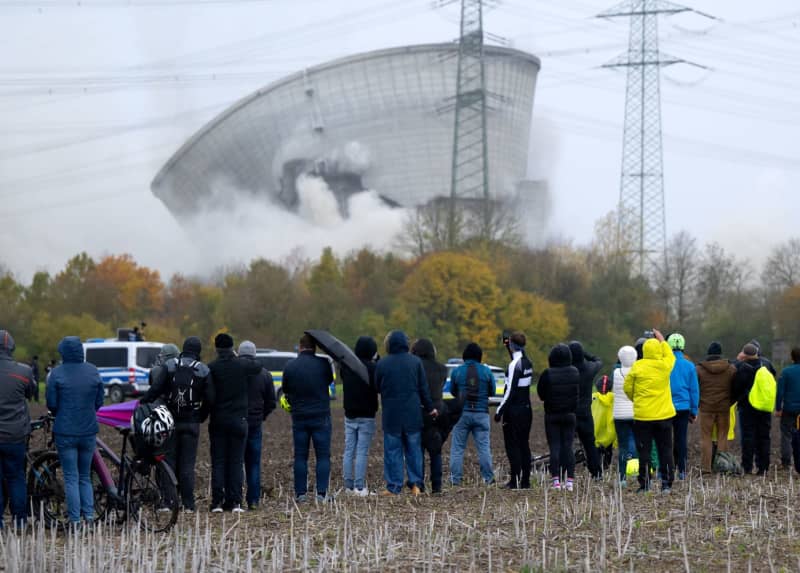The two 160-metre-high cooling towers at the former Gundremmingen nuclear power plant in southern Germany were demolished on Saturday, almost four years after the last reactor was shut down.
At 12 noon sharp (1000 GMT), the colossal structures, consisting of a total of 56,000 metric tons of reinforced concrete, collapsed.
Thousands of onlookers, mainly from the states of Bavaria and neighbouring Baden-Württemberg, watched the spectacular destruction of a symbol of the nuclear age.
The demolition went exactly as the demolition company commissioned to carry out the work had planned. There was a time difference of about 15 seconds between the two detonations of the explosives needed to destroy the two towers. The cooling towers each tilted slightly to one side and then collapsed vertically.
The Günzburg district administration had established a large restricted zone for the demolition.
The operator, RWE, and the demolition company had been preparing for the operation for more than a year. More than 1,000 holes were drilled into the structures for the explosives.
The nuclear power plant was finally taken off the grid at the end of 2021 with the shutdown of its third unit. Since then, the nuclear facility has been undergoing decommissioning, a process that will continue into the 2030s.
The cooling towers were once used to cool down water heated during electricity production before it was returned to the nearby River Danube.
After decommissioning is completed, RWE wants to use the site as a battery facility to store solar power generated during the day when the sun is shining, and then release it at night. A photovoltaic plant and a new gas-fired power station are also planned.
